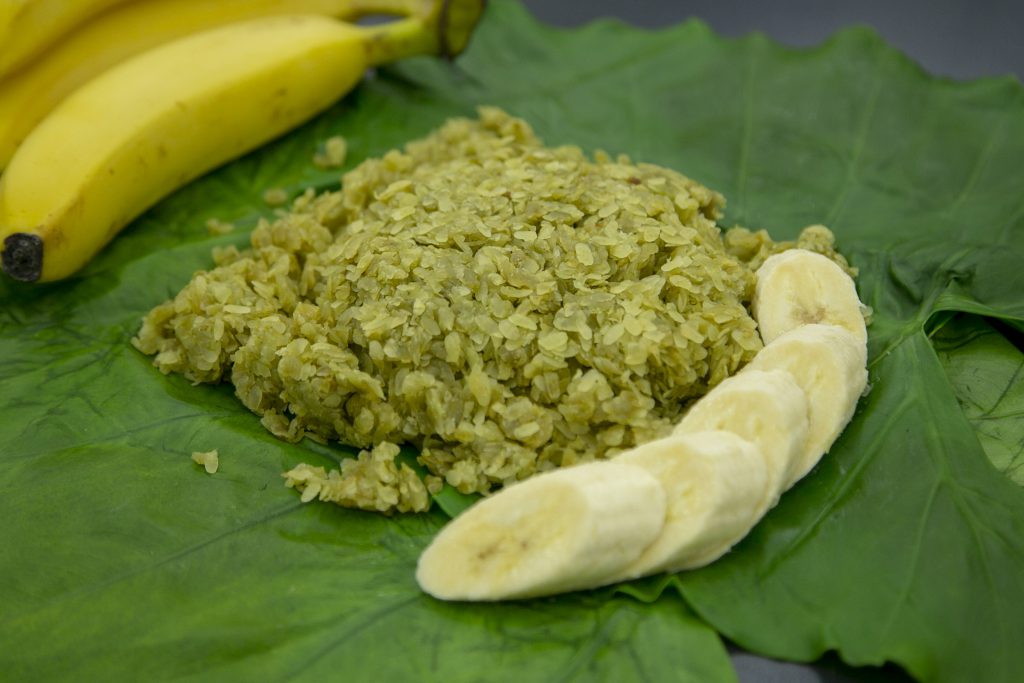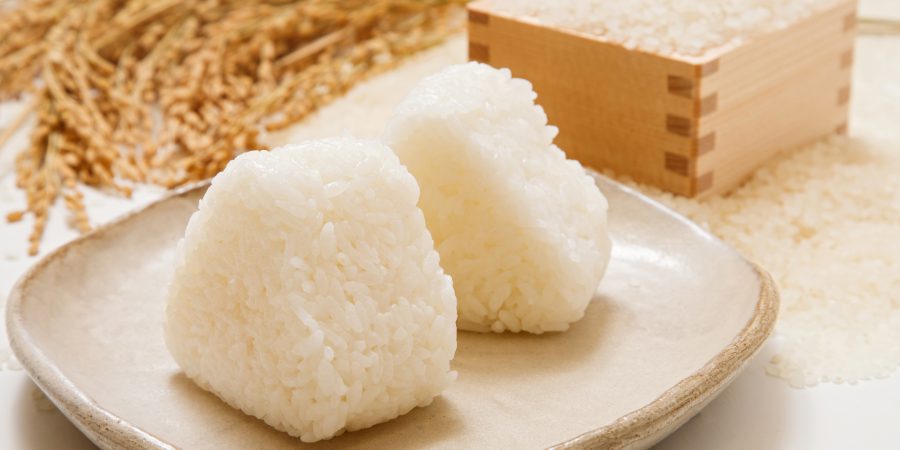Cốm, green rice coming from Vietnam Part 2
- Kome Lab

Actual eating
Let’s eat cốm.
It smells like soybean flour. Let’s see what the taste is.

When I spoon up it, it has a separated texture.
When I take a bite, the smell reminds me of soybean flour and green soybeans, and also has an elegant sweetness. I I also feel a freshly green scent in my mouth, softly coming from cốm and the leaves that the cốm was wrapped in.
The feeling of the rice in the mouth is slightly chewy, like rice cake without stickiness. The grain is dry and smooth but a little springy. A new palate feeling has come from Vietnam.
Combination of sweet green soybeans and rice cake usually becomes zunda mochi in Japan, which is rice cake covered with sweet green soybean paste, but this rice is mysteriously different. Cốm is not sweet like sugar and not soft like rice cake. The sweetness hidden in rice is fully brought out and a satisfactory sense of the rice grain can be felt. Those create the cốm-specific taste.
If cốm was a little stickier, we would be familiar with it in Japan because it would feel like rice cake or steamed glutinous rice. However, having the new palate feeling of cốm becomes rather a habit.
How to eat it deliciously
A Vietnamese at the local site explained to me how to eat the rice.
That is a simple and tasty method.
The method is eating the rice with bananas!

I will try to eat it with bananas right now.
This is definitely sweet! It tastes good!
The scent and mouthfeel of cốm are combined with the sweetness and stickiness of bananas. They mix in my mouth and the advantages of the characteristics are finally doubled.
Here is a naturalistic healthy sweet made by combining just steamed cốm with bananas, which will be popular in Japan too.
In both Vietnam and Japan, the staple food is rice. However, Vietnamese go beyond eating the green immature grain, cốm, to also eat broken rice that is called broken grain and is used for processing in Japan by steaming like Japanese rice, which is called cốm tấm. Moreover, they make cốm tấm by crushing regular rice into pieces.
In addition, phỏ, which is now well-known in Japan, and bủn, which is more popular in the local area are both made from rice flour. It’s interesting to think about how to cook rice because there are so many ways to cook it. If you travel somewhere, look for rice food and try it.
By K. Okawa
Related article

- Kome Lab
- Greeting from “KOME LAB”


